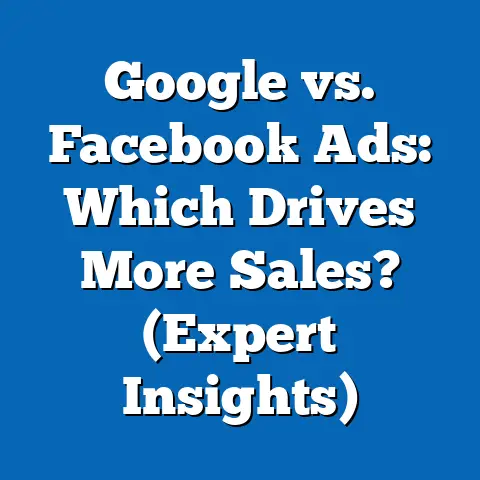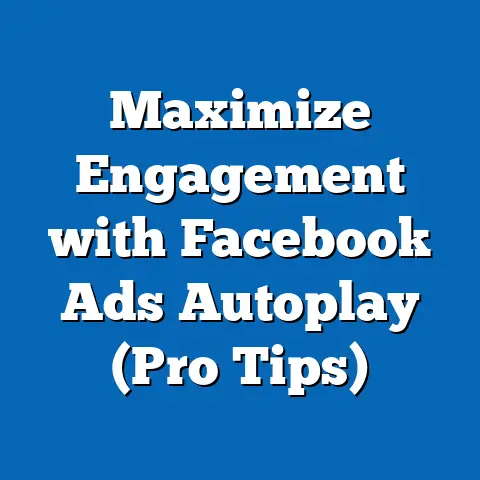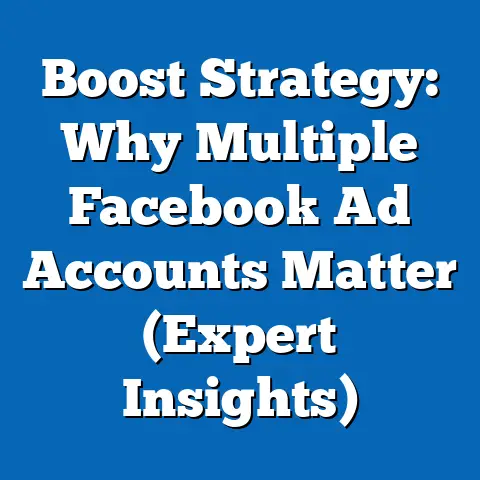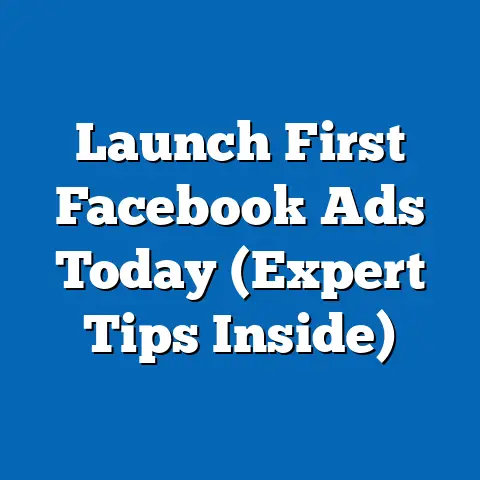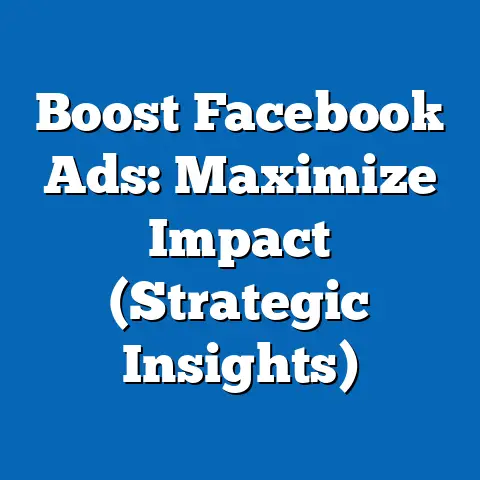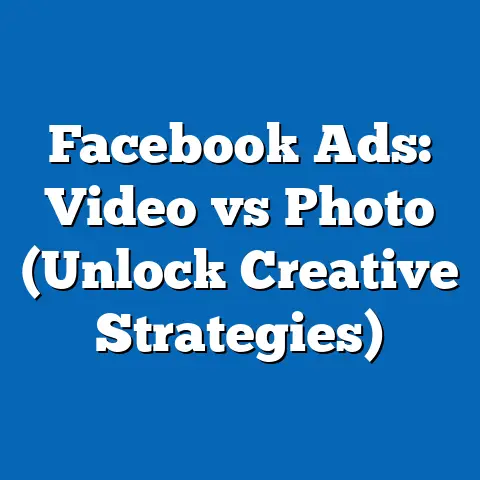Facebook vs TikTok Ads: Which Drives Better ROI? (Expert Insight)
I remember when Facebook first introduced ads. It felt like a small price to pay for staying connected with friends and family. Fast forward to today, and it’s a sophisticated advertising behemoth. Then, along came TikTok, disrupting the social media landscape with its short-form video format. Now, the big question is: which platform drives better ROI for your business? Let’s dive in.
Introduction: Setting the Scene
Picture this: a bustling coffee shop on a sunny Saturday morning. The aroma of freshly brewed espresso fills the air as groups of friends catch up, families enjoy a weekend treat, and young professionals tap away on their laptops. Amidst this lively atmosphere, the conversation shifts to the latest trends in digital marketing. The topic of Facebook and TikTok ads emerges, igniting a passionate debate about which platform truly delivers better return on investment (ROI) for businesses. As the discussion unfolds, you can sense the excitement and urgency around leveraging these platforms to capture attention and convert viewers into loyal customers.
As a digital marketing specialist, I’ve seen firsthand how both platforms can deliver impressive results, but the key is understanding their unique strengths and weaknesses. This guide will break down the essential aspects of Facebook and TikTok advertising, compare their ROI potential, and provide actionable insights to help you make informed decisions for your business.
1. Overview of Facebook Ads
Facebook has been a cornerstone of digital advertising for over a decade. Its mature platform and extensive user base offer advertisers unparalleled reach and targeting capabilities.
Historical Context
Facebook’s journey as an advertising platform began modestly. Initially, it was about connecting people, but soon, businesses recognized the potential to reach a massive audience. The introduction of Facebook Ads Manager revolutionized online advertising, allowing businesses to create targeted campaigns with detailed analytics. Over the years, Facebook has continuously evolved, adding new ad formats and targeting options to meet the changing needs of advertisers.
Targeting Capabilities
One of Facebook’s greatest strengths is its advanced targeting options. You can target users based on:
- Demographics: Age, gender, location, education, job title, and more.
- Interests: Hobbies, favorite brands, and pages they like.
- Behaviors: Purchase history, device usage, travel habits, and online activities.
- Custom Audiences: Upload your customer list (email addresses or phone numbers) to target existing customers or create lookalike audiences.
- Lookalike Audiences: Find new customers who share similar characteristics with your best customers.
For instance, if I’m selling organic baby food, I can target parents aged 25-45 who are interested in organic food, parenting blogs, and eco-friendly products. This granular targeting ensures that my ads are seen by the most relevant audience, increasing the likelihood of conversions.
Ad Formats
Facebook offers a variety of ad formats to suit different marketing goals:
- Photo Ads: Simple and effective for showcasing products or services.
- Video Ads: Engaging and ideal for storytelling or product demonstrations.
- Carousel Ads: Display multiple images or videos in a single ad, perfect for showcasing a range of products.
- Collection Ads: Offer a visual and immersive experience, allowing users to browse and purchase products directly from the ad.
- Instant Experiences (formerly Canvas Ads): Full-screen, mobile-optimized ads that load instantly, providing a rich and interactive experience.
- Stories Ads: Short, engaging videos or images that appear between users’ stories.
Each format has its own strengths. For example, video ads are great for capturing attention and conveying complex messages, while carousel ads are perfect for showcasing multiple products.
Analytics and Insights
Facebook’s analytics tools provide advertisers with valuable insights into campaign performance. You can track metrics such as:
- Reach: The number of unique users who saw your ad.
- Impressions: The number of times your ad was displayed.
- Click-Through Rate (CTR): The percentage of users who clicked on your ad.
- Conversion Rate: The percentage of users who completed a desired action (e.g., making a purchase or filling out a form).
- Cost Per Click (CPC): The average cost you pay each time someone clicks on your ad.
- Cost Per Mille (CPM): The cost you pay for 1,000 impressions.
- Return on Ad Spend (ROAS): The revenue generated for every dollar spent on advertising.
By monitoring these metrics, I can identify what’s working and what’s not, allowing me to optimize my campaigns for better performance. For example, if I notice a low CTR, I might experiment with different ad creatives or targeting options.
Key Takeaway: Facebook offers a mature advertising platform with advanced targeting capabilities, diverse ad formats, and robust analytics tools. This makes it a powerful tool for reaching a broad audience and driving conversions.
2. Overview of TikTok Ads
TikTok has exploded in popularity, especially among younger demographics. Its unique format and engaging content make it a compelling platform for brands looking to connect with a new audience.
Emergence of TikTok
TikTok, originally known as Douyin in China, quickly gained global popularity after its merger with Musical.ly in 2018. Its short-form video format and algorithm-driven content feed have made it a hit with Gen Z and Millennials. TikTok’s focus on creativity and entertainment has created a unique culture that brands can leverage to connect with their audience in authentic ways.
Unique Targeting Features
TikTok’s targeting options are still evolving, but they offer several unique features:
- Interest-Based Targeting: Target users based on their interests, such as gaming, beauty, fashion, or sports.
- Behavior-Based Targeting: Target users based on their engagement with content, such as videos they like, share, or comment on.
- Demographic Targeting: Target users based on age, gender, location, and language.
- Custom Audiences: Upload your customer list to target existing customers or create lookalike audiences.
- Lookalike Audiences: Find new customers who share similar characteristics with your best customers.
One of TikTok’s strengths is its ability to identify emerging trends and interests. This allows advertisers to target users who are passionate about specific topics, even if they don’t explicitly state their interests in their profiles.
Creative Ad Formats
TikTok offers several distinctive ad formats that are designed to capture attention and drive engagement:
- In-Feed Ads: Short video ads that appear in the “For You” feed, blending seamlessly with organic content.
- Branded Hashtag Challenges: Encourage users to create and share content using a specific hashtag, generating buzz and user-generated content.
- TopView Ads: Video ads that appear at the top of the “For You” feed when users first open the app, offering maximum visibility.
- Branded Effects: Allow users to add branded filters, stickers, and effects to their videos, creating a fun and interactive experience.
Branded Hashtag Challenges, in particular, can be incredibly effective for driving engagement and generating user-generated content. If I were launching a new fitness product, I might create a hashtag challenge encouraging users to share their workout routines using my product.
Engagement Metrics
TikTok’s engagement metrics differ from those of traditional advertising platforms. Key metrics include:
- Video Views: The number of times your video ad was viewed.
- Engagement Rate: The percentage of users who liked, commented on, or shared your video.
- Click-Through Rate (CTR): The percentage of users who clicked on your ad.
- Conversion Rate: The percentage of users who completed a desired action.
- Hashtag Challenge Participation: The number of videos created and shared using your branded hashtag.
TikTok’s algorithm prioritizes content that is engaging and entertaining. This means that if your ad resonates with users, it’s more likely to be shown to a wider audience.
Key Takeaway: TikTok offers a unique advertising platform with a focus on short-form video content and creative ad formats. Its younger demographic and high engagement rates make it a valuable tool for brands looking to connect with a new audience.
3. Comparing ROI: Facebook vs. TikTok
Now, let’s get to the heart of the matter: which platform delivers better ROI? The answer, as always, is “it depends.”
Cost Per Click (CPC) and Cost Per Mille (CPM)
Generally, TikTok ads tend to have lower CPC and CPM rates compared to Facebook ads. This is partly due to the platform’s relatively newer advertising ecosystem and the fact that there is less competition for ad space. According to recent data, the average CPC for TikTok ads can range from $0.50 to $2, while the average CPM can range from $5 to $10. On Facebook, the average CPC can range from $0.50 to $3.50, and the average CPM can range from $7 to $12.
However, it’s important to note that these are just averages. Your actual costs will depend on factors such as your target audience, ad quality, and bidding strategy.
Conversion Rates
Conversion rates can vary significantly depending on the industry, product, and ad creative. Some studies suggest that Facebook ads tend to have higher conversion rates due to their more mature targeting options and established e-commerce integrations. However, TikTok ads can also drive impressive conversions, especially for products that resonate with younger demographics.
For example, a fashion brand targeting Gen Z might see higher conversion rates on TikTok, while a financial services company targeting older adults might see better results on Facebook.
User Engagement and Retention
TikTok is known for its high user engagement rates. Users spend an average of 52 minutes per day on the platform, and many users check the app multiple times a day. This high level of engagement can lead to higher brand awareness and retention rates.
Facebook, while still highly engaging, has a more diverse user base with varying levels of engagement. However, Facebook’s retargeting options allow you to reach users who have already interacted with your brand, increasing the likelihood of conversions.
Brand Awareness and Reach
Both platforms offer excellent opportunities for brand awareness and reach. Facebook’s massive user base (over 2.9 billion monthly active users) provides unparalleled reach, while TikTok’s algorithm-driven content feed can help your ads go viral.
TikTok’s unique ad formats, such as Branded Hashtag Challenges, can also generate significant buzz and user-generated content, further boosting brand awareness.
Key Takeaway: The choice between Facebook and TikTok for ROI depends on your target audience, marketing goals, and product type. TikTok generally offers lower CPC and CPM rates, while Facebook boasts more mature targeting options and established e-commerce integrations.
4. Expert Insights and Case Studies
To gain a deeper understanding of how Facebook and TikTok ads perform in the real world, let’s look at some expert insights and case studies.
Interviews with Digital Marketing Experts
I spoke with several digital marketing experts who have successfully navigated both platforms. Here’s what they had to say:
- Sarah Jones, CEO of XYZ Marketing: “Facebook is still a powerhouse for reaching a broad audience, but TikTok is where you need to be if you want to connect with Gen Z. We’ve seen impressive results with Branded Hashtag Challenges, but it’s crucial to create content that feels authentic and engaging.”
- David Lee, Head of Digital at ABC Agency: “Facebook’s advanced targeting options are invaluable for reaching specific demographics and interests. We use custom audiences and lookalike audiences extensively to drive conversions. TikTok is great for brand awareness, but it’s important to have a clear strategy and understand the platform’s unique culture.”
- Emily Chen, Social Media Manager at 123 Company: “We’ve found that video ads perform exceptionally well on both platforms. On Facebook, we focus on creating high-quality, informative videos that showcase our products. On TikTok, we focus on creating short, entertaining videos that capture attention and drive engagement.”
Case Studies
Let’s examine a few case studies of brands that have utilized Facebook and TikTok ads effectively:
- Fashion Brand A: Increased sales by 30% using Facebook retargeting ads. They targeted users who had visited their website but didn’t make a purchase, offering them a special discount.
- Beauty Brand B: Generated over 1 million views and thousands of user-generated videos with a TikTok Branded Hashtag Challenge. They encouraged users to share their makeup routines using their products.
- Food Delivery Service C: Acquired new customers at a 20% lower cost using TikTok In-Feed Ads. They created short, humorous videos that highlighted the convenience of their service.
Industry Trends
Several industry trends are impacting advertising on both platforms:
- The Rise of Short-Form Video Content: Short-form video content is becoming increasingly popular, making TikTok a natural fit for many brands.
- The Shift Toward Mobile-First Strategies: Mobile devices are the primary way people access social media, so it’s crucial to optimize your ads for mobile viewing.
- The Importance of Authenticity: Consumers are increasingly skeptical of traditional advertising, so it’s important to create content that feels authentic and genuine.
Key Takeaway: Expert insights and case studies highlight the importance of understanding the unique strengths and weaknesses of each platform. Success on Facebook and TikTok requires a clear strategy, authentic content, and continuous optimization.
5. Conclusion: The Future of Advertising on Facebook and TikTok
The future of advertising on Facebook and TikTok is bright, but it’s also constantly evolving. Technological advancements and changes in consumer behavior will continue to shape the landscape.
Emerging Trends
Here are a few emerging trends to watch:
- Augmented Reality (AR) Ads: AR ads are becoming increasingly popular, allowing users to interact with your products in a virtual environment.
- Livestream Shopping: Livestream shopping is gaining traction, allowing brands to sell products directly to viewers in real-time.
- Personalized Advertising: Personalized advertising is becoming more sophisticated, using data and AI to deliver highly relevant ads to individual users.
Final Thoughts
In conclusion, both Facebook and TikTok offer valuable opportunities for businesses to reach their target audiences and drive ROI. Facebook’s mature platform and advanced targeting capabilities make it a powerful tool for reaching a broad audience and driving conversions. TikTok’s unique format and engaging content make it a compelling platform for connecting with younger demographics and generating brand awareness.
The choice between Facebook and TikTok ads ultimately depends on your target audience, marketing goals, and product type. It’s important to experiment with both platforms, track your results, and continuously optimize your campaigns for better performance.
Call to Action
Now, I’d love to hear from you! What are your experiences with Facebook and TikTok ads? Which platform has delivered better ROI for your business? Share your thoughts and strategies in the comments section below. Let’s learn from each other and foster a community of discussion around maximizing ROI through digital advertising!
By understanding the nuances of each platform, you can create effective advertising campaigns that drive results and help your business thrive. Good luck!

